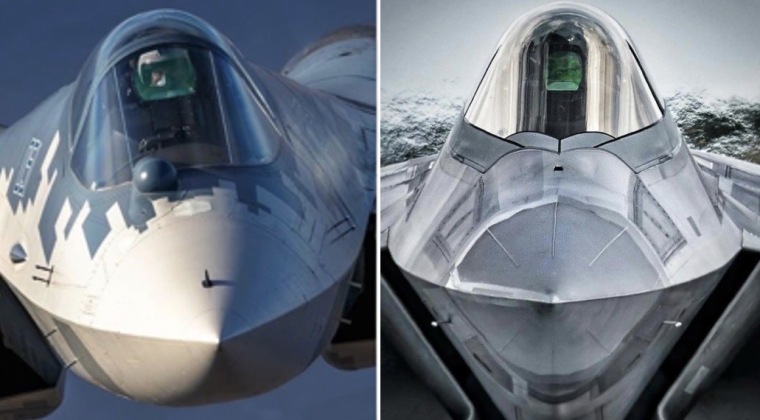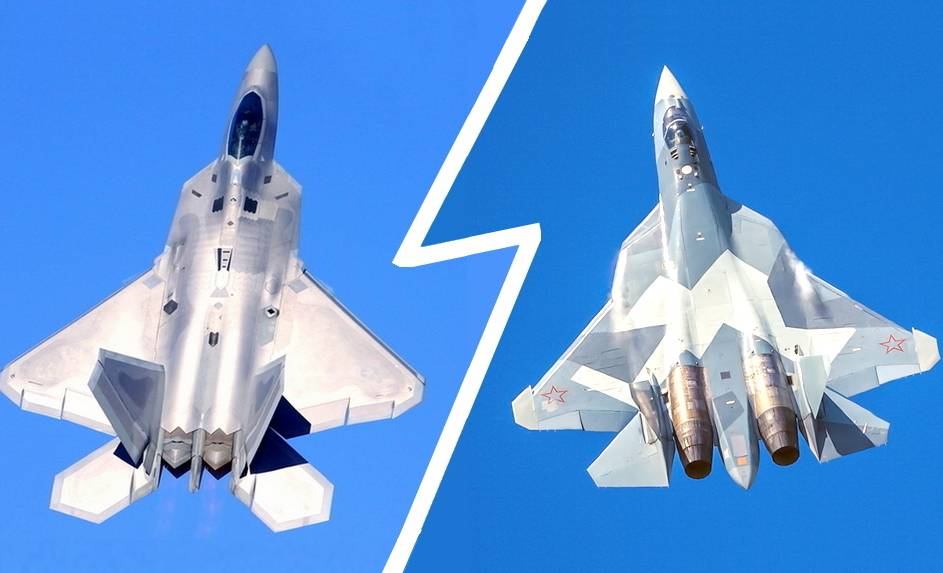When it comes to modern fighter jets, the debate over which aircraft boasts superior thrust vectoring capabilities—between the American F-22 Raptor and the Russian Su-57—has long intrigued aviation enthusiasts and military experts alike. Thrust vectoring, a key feature that enhances an aircraft’s maneuverability by directing the engine’s thrust, plays a crucial role in dogfighting and evasive maneuvers, making it a significant factor in aerial superiority.

The F-22 Raptor’s Thrust Vectoring
The F-22 Raptor, the United States’ premier stealth fighter, was the first production aircraft to feature thrust vectoring. Its engines, the Pratt & Whitney F119, are equipped with two-dimensional (2D) thrust vectoring nozzles that can move up and down by 20 degrees. This capability allows the F-22 to perform incredibly tight turns, quick pitch changes, and maintain control at high angles of attack. The Raptor’s thrust vectoring system is fully integrated with its flight control system, allowing for seamless transitions between conventional flight and thrust vectoring-enhanced maneuvers.
The 2D nature of the F-22’s thrust vectoring might seem limited compared to more flexible designs, but the Raptor compensates with its overall agility, speed, and stealth features. The F-22’s thrust vectoring is particularly effective in scenarios requiring rapid pitch adjustments, which enhances its already formidable dogfighting capabilities.
The Su-57’s Thrust Vectoring
The Russian Su-57, designed as a fifth-generation multirole fighter, features more advanced 3D thrust vectoring nozzles. The Su-57’s engines, currently the Saturn AL-41F1 with plans for the Izdeliye 30 in the future, can direct thrust in multiple directions—up, down, and sideways. This 3D thrust vectoring gives the Su-57 a broader range of maneuvering options, allowing it to execute complex aerobatic maneuvers, such as flat spins and rapid directional changes, with ease.
The 3D vectoring also enhances the Su-57’s ability to perform extreme maneuvers at lower speeds, providing a tactical advantage in close-range dogfights. The Su-57’s thrust vectoring system is also integrated with its flight control system, allowing pilots to exploit its full potential in combat situations.

Comparing Thrust Vectoring: F-22 vs. Su-57
While both the F-22 and Su-57 possess impressive thrust vectoring capabilities, their systems are designed with different philosophies in mind. The F-22’s 2D vectoring is optimized for rapid pitch changes and maintaining stability at high speeds, making it ideal for fast-paced air superiority missions. On the other hand, the Su-57’s 3D vectoring provides greater flexibility in low-speed dogfights and complex maneuvers, potentially giving it an edge in close-quarters engagements.
However, thrust vectoring is only one aspect of an aircraft’s overall performance. The F-22’s superior stealth, avionics, and integrated systems make it a formidable opponent, even if its thrust vectoring is less versatile than the Su-57’s. Conversely, the Su-57’s 3D vectoring offers unique tactical options that could prove decisive in the right circumstances, though it may be less effective in scenarios where stealth and speed are paramount.
Conclusion: A Balanced Perspective
In the battle of thrust vectoring, the F-22 and Su-57 each have their strengths. The F-22 excels in stability, speed, and stealth, with its 2D vectoring perfectly complementing its design philosophy. The Su-57, with its 3D thrust vectoring, offers unmatched maneuverability in dogfights, potentially giving it an edge in certain close-range combat situations. Ultimately, the effectiveness of each aircraft’s thrust vectoring system depends on the context of the engagement and the skills of the pilots flying them.





